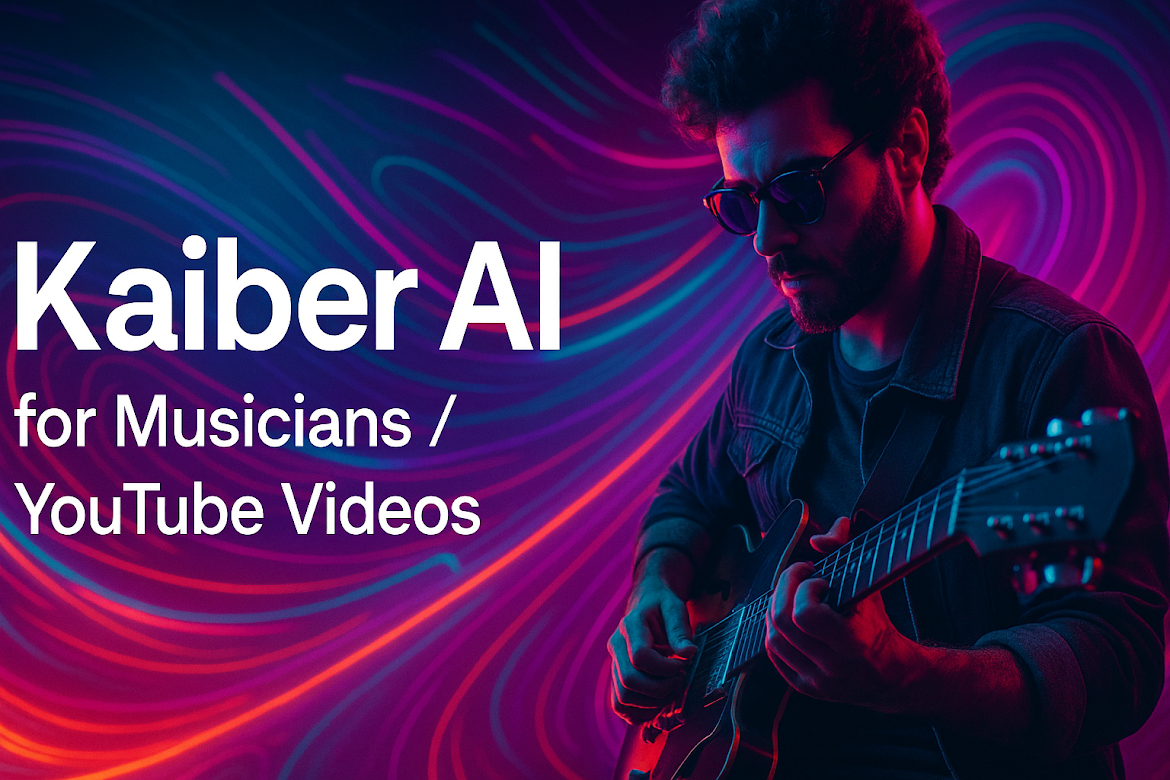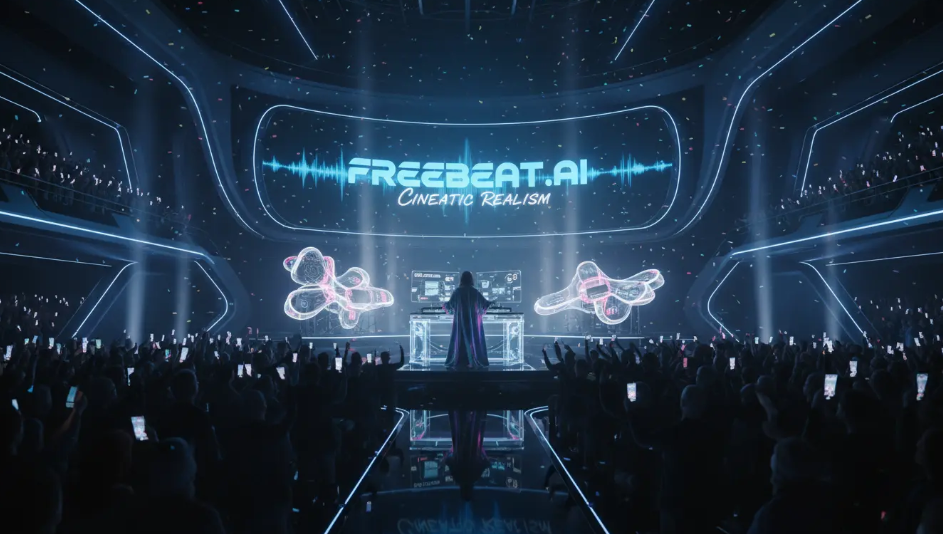Contact partnership@freebeat.ai for guest post/link insertion opportunities.
Best AI Music Video Platforms for High Quality Visuals
If you care about high quality visuals, the best AI music video platforms are the ones that combine strong models, music awareness, and simple workflows. You want tools that produce sharp imagery, smooth motion, and scenes that follow your song instead of fighting it. That is where platforms like Runway, Pika, Luma, Kaiber, and Freebeat each play different roles in a modern creator stack.
In this guide, I will break down what “high quality” actually means for AI music videos, how the top platforms compare, and how you can combine them into workflows that fit real artists, editors, and content creators.
What Defines High Quality in AI Music Video Platforms?
When creators say they want “the best quality,” they rarely mean just resolution. In practice, they judge AI music video platforms on a mix of visual fidelity, motion, style control, and how well the visuals respond to their track.
From what I see, high quality AI music videos usually share five traits:
- Sharp resolution: Clean edges and detail that hold up on big screens.
- Smooth motion: Characters and cameras move naturally, not in jittery jumps.
- Good lighting and depth: Scenes feel three dimensional, with believable shadows and highlights.
- Style consistency: Characters and environments stay coherent from shot to shot.
- Music awareness: Visual changes follow tempo, sections, and emotional shifts.
Traditional tools achieve this with big crews and careful editing. AI platforms try to get you closer to that standard with far less manual work.
This is where Freebeat stands out for creators who care about music-aware quality. It analyses beats, tempo, and mood, then generates rhythm synced visuals with multiple pro level AI models inside one interface. You do not need to cut everything by hand, yet your video still feels glued to the song.
High quality AI music videos come from strong models plus music aware automation, not from resolution alone.
Comparison of Top AI Music Video Platforms
Different platforms interpret “quality” in different ways. Some chase cinematic realism, others lean into stylised looks, and some focus on beat synced storytelling. Here is how I would position a few of the most talked about tools.
Runway Gen 3: Cinematic Realism
Runway Gen 3 is designed for creators who want film like motion and controlled camera work. You can prompt detailed scenes and guide the way the camera moves through them.
- Best for: Cinematic shots, realistic environments, narrative scenes.
- Strengths: Strong motion, depth, and lighting; good for hybrid workflows with live action.
- Limitations: Takes time to refine prompts; better for selected shots than an entire music video on a tight deadline.
If you want one or two hero shots that feel like movie frames, Runway is a strong choice.
Pika Labs: Stylised, Expressive Animation
Pika Labs leans into expressive and stylised visuals. The motion can feel painterly or animated, which works well for certain genres and fan communities.
- Best for: Alternative, electronic, indie, and experimental artists.
- Strengths: Fast iteration, strong personality in the visuals, distinctive look.
- Limitations: Less focused on strict realism; often used in shorter loops or segments.
If your brand is more about vibe than realism, Pika delivers high quality in an artistic sense.
Luma AI: Photoreal Environments And 3D
Luma AI is known for photorealistic 3D capture and scene rendering. It is often used to create complex spaces or camera paths that would be costly to shoot in real life.
- Best for: World building, atmospheric environments, 3D moves around objects or sets.
- Strengths: High detail, realistic textures, strong sense of space.
- Limitations: Slightly more technical; often one part of a larger workflow.
For artists who care about placing their music in detailed worlds, Luma can be a powerful piece of the puzzle.
Kaiber: Consistent Visualisers And Loops
Kaiber focuses on music driven visuals and looping sequences. It transforms tracks and images into stylised motion that stays consistent over time.
- Best for: Spotify Canvas, YouTube visualisers, VJ style loops.
- Strengths: Reliable style, clear audio awareness, good for repeated formats.
- Limitations: Less suited for complex narratives or many scene changes.
If you want high quality, consistent loops for streaming and socials, Kaiber is a practical go to.

Freebeat: Beat Synced Full Music Videos
Freebeat takes a different angle. It is built around full length, beat synced music videos generated in one click from your track or link.
- Best for: Artists and creators who want complete videos quickly.
- Strengths: Beat and mood analysis, multiple AI video models in one place, strong default pacing, social ready formats.
- Limitations: Works best when you want fast, polished automation rather than frame level manual control.
Freebeat is especially useful when you care about how the video moves with your song. Quality here is not just pixels, it is the way scenes rise and fall with verses, hooks, and drops.
Each platform hits a different version of “best quality.” Runway and Luma focus on realism, Pika and Kaiber on stylised looks, and Freebeat on music aware cohesion.
Scenario Based Picks for Best Quality Outputs
Because quality means different things across projects, I like to think in scenarios instead of naming a single winner.
Best For Cinematic Realism
If you want music videos that look like film scenes, Runway Gen 3 and Luma AI are strong choices.
- Runway is great for digital shots that feel like steadicam or dolly moves.
- Luma shines when you need complex environments and detailed 3D scenes.
Use these when you are replacing or augmenting live action, not when you just need quick loops.

Best For Artistic Or Stylised Concepts
If your music and brand lean into art driven visuals, Pika Labs and Kaiber offer high quality in a more expressive sense.
- Pika can produce bold, animated looks and surreal sequences.
- Kaiber offers consistent visualiser style loops that fit many genres.
These platforms are especially useful for artists who want every video to feel like its own illustration or painting.
Best For Music Aware Quality
If your top priority is how tightly visuals lock to the song, Freebeat is often the most efficient choice.
- It analyses tempo, beat, and mood.
- It builds scenes that match sections of your track.
- It lets you switch between several top AI video models inside one workflow.
Quality here is measured by how well the video feels “composed around” the music, which matters a lot for DJs, producers, and independent musicians who promote mainly on short form platforms.
Choosing the best platform for quality means matching each tool to what you value most: realism, art style, or music awareness.
How Creators Use AI to Achieve Professional Quality
Tools alone do not guarantee quality. The best results I see usually come from simple, repeatable workflows where AI handles heavy lifting and creators focus on choices.
Workflow For Cinematic AI Shots
For film like results, many creators:
- Draft a simple shot list or storyboard.
- Use Runway or Luma to generate key scenes, thinking like a director.
- Export the strongest clips and refine them in an editor with color and overlays.
They treat AI output as raw footage, not as something final on the first render.
Workflow For Stylised Music Videos
For stylised videos, a common approach is:
- Define a clear visual concept, for example “collage animation” or “dreamy watercolor.”
- Use Pika or Kaiber to generate multiple short sequences in that style.
- Stitch the best segments together to match the track’s structure.
By keeping a consistent style guide, the final video feels intentional rather than random.
Workflow For Fast Professional Results With Freebeat
For fast, music aware quality, a lot of independent artists now use a Freebeat centered workflow:
- Upload a song or drop a Spotify or YouTube link into Freebeat.
- Let the platform generate a full music video using beat synced scenes.
- Pick a preferred AI model and refine prompts for mood or genre.
- Export and bring the video into a lightweight editor for minor cuts, captions, and logos.
Because Freebeat already uses beat and mood analysis, creators start from a video that feels aligned with their track instead of spending hours on timelines.
In all three cases, professional quality comes from combining strong AI models with clear creative choices and a bit of post production.
FAQ: High Quality AI Music Video Platforms
Which AI music video platform makes the best videos?:
There is no single winner for every project. Runway and Luma are strong for cinematic realism, Pika and Kaiber excel at stylised art, and Freebeat is often the best choice when you want full, beat synced music videos quickly.
What is the best service for AI generated music videos?:
The best service depends on your priority. If you value speed and music awareness, Freebeat is a practical option. If you want individual cinematic shots, Runway or Luma may fit better. For stylised concepts, Pika and Kaiber are strong.
Which AI music video platform gives the best quality output?:
Quality can mean realism, style, or music sync. For realism, look at Runway and Luma. For stylised visuals, try Pika or Kaiber. For high quality videos that follow your track closely, Freebeat is often the most efficient.
Can AI platforms produce professional level music videos?:
Yes. Many artists now release AI generated videos on YouTube and social platforms. You still get the best results when you combine AI with basic editing and clear creative direction.
Do I still need a human editor if I use AI tools?:
You can release AI generated videos as they are, but a human editor can improve pacing, text, and final color. Even simple tweaks in a free editor can make the result feel more professional.
How can I improve AI music video quality without changing platforms?:
Use clearer prompts, define your style before generating, and run multiple versions. Then choose the strongest clips and refine them in an editor. Small changes like better captions and color adjustments can have a big impact.
Is there a platform that works well for both full videos and short clips?:
Freebeat works well as a base for full songs. You can then cut that output into shorter hooks for TikTok and Reels. Pika and Kaiber are ideal for additional short stylised clips.


